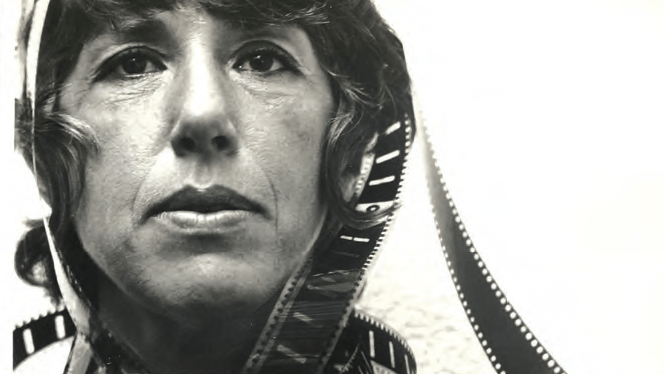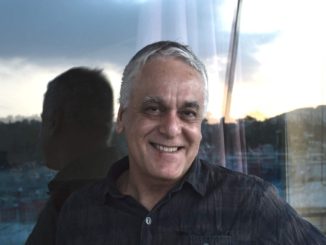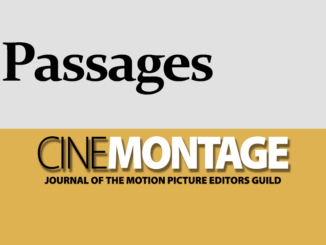
JULY 3, 1928 – MAY 17, 2023
Film editor Marion Rothman passed a way on May 17, 2023, at the age of 94. She spent her long career editing an extremely eclectic group of films, spanning many genres. These included “Memoirs of an Invisible Man” (1992), “Mystic Pizza” (1988), “Starman” (1984), “Christine” (1983), “All Night Long” (1981), “Starting Over” (1979), “Comes a Horseman” (1978), “Funny Lady” (1975) and “Play It Again, Sam” (1972). Marion was known for her dedication to bringing the director’s vision to the screen, and she was fiercely loyal to the many varied directors she worked with. These included Herbert Ross, John Carpenter, Donald Petrie, Harold Ramis, Alan Pakula, Richard Fleischer, and Jean-Claude Tramont, among many others.
Marion was also known for her wicked sense of humor, which she often used to defuse stressful editing room situations. I was lucky enough to have worked with Marion at the beginning of my career on three different films, the first of which was “Starting Over” (1979). She hired me as an apprentice. It was one of my first jobs after I moved to Los Angeles from London. I was very impressed by her strength and integrity. She always protected her crew and stood up for them.
It was around this time that Marion met the love of her life, Diane Castro. They were together for 44 years. They married in 2008, when same-sex marriage became legal in California.
Marion was born on July 3, 1928, in Detroit, Mich., the daughter of Russian immigrants. Her family moved to Los Angeles and Marion graduated from UCLA. Her father owned a number of billiard parlors that were later taken over by her older brother, Ted. Marion’s father also owned a candy store when she was a child. Candy stores back then were often the targets of organized crime, and Marion used to say she was the only child she knew who had a bodyguard.
She attended a workshop in North Carolina where she met director Arthur Penn and a young Jack Nicholson. Marion co-wrote a script there called “The Wild Ride” that was subsequently made into a film starring Nicholson. Despite having no family in the business or any connections, she went on to work as a secretary for George Stevens Jr., whose father George Stevens was directing “The Diary of Anne Frank” (1959). Part of her job was to take notes for the director in the projection room. Stevens often asked for her opinions and told her she had “a good eye.”
This led to a job as an assistant editor on the film, which piqued her interest in film editing. One of her first films as an editor was “The Boston Strangler” (1968), for which she was nominated for an ACE Eddie award.
Marion worked at a time when the film business was a man’s world and women had a difficult time advancing. Sometimes called “The Dragon Lady” (with a lot of affection), Marion did not suffer fools. But her toughness, ambition, and integrity impressed directors over many decades. The strength she radiated also lost her a number of jobs. Not every director considered her strengths something they wanted in an editor. But Marion never compromised who she was to get a job.
Marion bonded with other strong women during the ’60s and ‘70s. Editor Marjorie Fowler was a mentor. And Marion was to become good friends with fellow editor Verna Fields, who went on to become a vice president at Universal. On the film “Ash Wednesday” (1973) that starred Elizabeth Taylor and Henry Fonda, Marion and Taylor “hung out” together on location in Italy, commiserating on the difficult production that had gone overbudget and overschedule. According to Diane, Taylor and Marion consumed many glasses of wine together.
Before the advent of digital editing, there were primarily three viewing devices used to edit film: a Moviola, a Kem, or a Steenbeck. Marion was a Moviola person and did not like the Kem or the Steenbeck. She expressed her feelings about how she liked to work in a 2019 interview for the Motion Picture Editors Guild Archive.
“What is interesting is what precipitated my getting out of the business. I’d done something like 22 features. We were turning to Kems and some digital (editing systems). But I loved the feeling of film going through my fingers into a movie. My deciding where to cut, cutting it, clipping it. I just loved that experience. I could never adjust to working on a Kem.”
And she was very particular about her grease pencils.
Editor Scott Vickrey recalled working with her on “Starting Over.”
“I assisted Marion on that film. It was the biggest job I’d had until that point. She took a chance on me and I always appreciated that.
“She always had to have her grease pencils sharpened before she came into work, and if they were not sharp, she would literally throw them at me. She told me at the start of the project to make sure I set up the editing room as simply as possible. So that if I died during the editing, someone could take over for me without skipping a beat.
“She and the director, Alan Pakula, would love to have a gin and tonic toward the end of the day, and I was in charge of making them. If it happened to be a Friday or an evening when I wanted to get out at a decent hour, I would make the drinks a little stronger than usual. That always seemed to do the trick.
“Marion was an excellent editor and I learned so much from her — I think more than from any other editor I assisted. She was very generous with letting me cut scenes, bringing me into the process and asking me what I thought. I would have loved to work with her again, but at the time, I was a New Yorker and she was from LA.”
Retired film editor Bill Carruth, who worked with both Marion and Verna Fields, had this to say:
“I loved working with Marion. Some of the best years of my life were spent with her and Verna.”
Kathy Korth, who assisted Marion on “Comes a Horseman” and “Starting Over,” put it this way: “Marion did not suffer fools, but it made me a much better assistant editor, working for her.”
It was on the film “Nighthawks” (1981) that Marion met Virginia (Ginny) Katz, who was to assist Marion on many films before becoming a successful editor herself.
“I had two mentors: My father (editor/producer Sidney Katz) and Marion,” Ginny said. “Marion showed me what it’s like to be a working woman in a predominantly male world. There were few woman editors at that time. We worked together for many years. Marion was a great editor and an even greater person. We stayed in touch these past years, and I often visited her and her wife Diane in San Diego, where they lived. I loved her and will miss her incredible wit and sharp sense of humor.” Marion is survived by her wife, Diane.
-Rachel Igel





